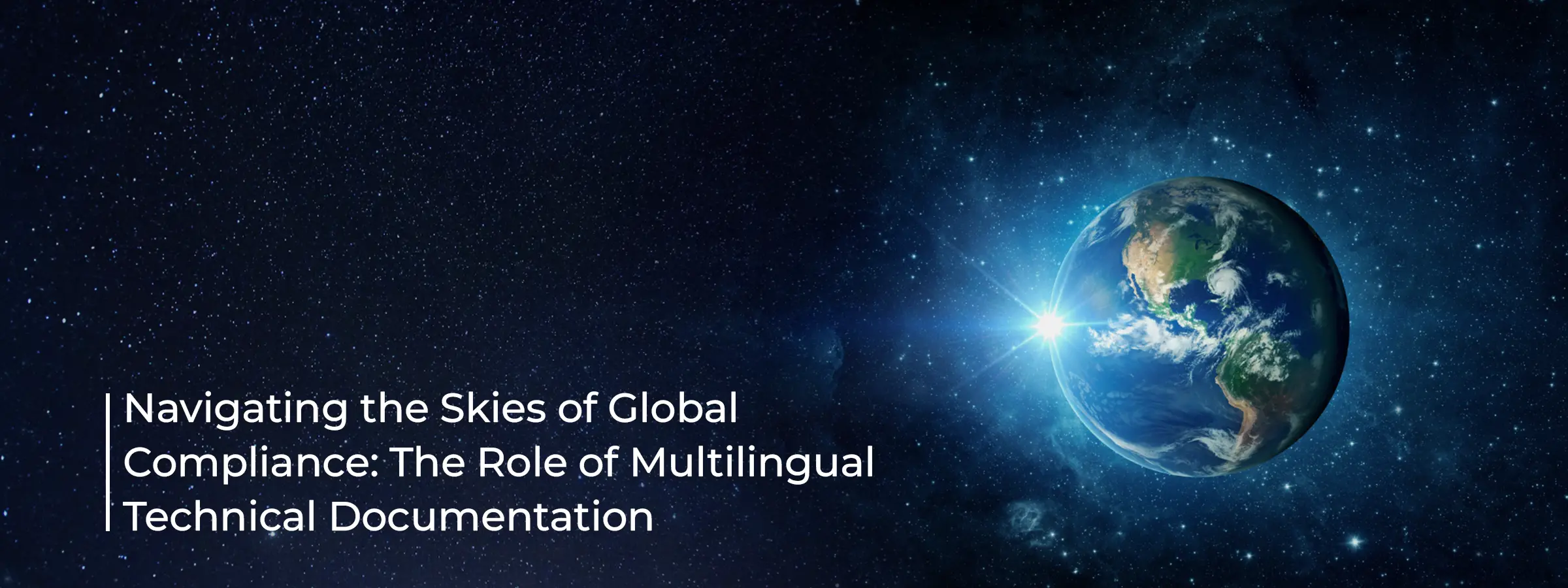
In the intricate world of aerospace and defence, where the precision of technical documentation can be the difference between success and failure, multilingual documentation becomes beneficial and imperative. The aerospace industry, by its very nature, is global. Aircraft traverse international borders, and their components are often sourced from various countries. This international cooperation and operation create a unique challenge: ensuring that technical documentation meets global markets' diverse linguistic and regulatory requirements. Here's how navigating the skies of global compliance is made smoother with the power of multilingual technical documentation.
Accuracy in technical documentation is paramount in the aerospace industry. A minor misinterpretation can lead to significant operational delays, safety risks, or compliance violations. Translating technical documents such as maintenance manuals, safety procedures, and aircraft operation manuals into multiple languages ensures that all personnel, regardless of their native language, have precise and clear instructions. This level of accuracy is crucial for safety and maintaining the integrity of operations across different geographical locations.
Aerospace companies must navigate a complex web of international regulations governing aircraft manufacturing, operation, maintenance, and safety standards. Each country, or even region, may have its rules and compliance standards. Multilingual technical documentation ensures that these regulations are accurately communicated and adhered to, reducing the risk of non-compliance penalties, which can be severe and include fines, operational restrictions, or in extreme cases, grounding of aircraft.
Collaboration between technical experts and linguistic professionals is essential in creating multilingual technical documentation. This partnership ensures that technical jargon and industry- specific terminologies are accurately translated and localised, considering cultural nuances and technical standards. It's about engineering a universal language that transcends borders, ensuring clear, effective communication across the global aerospace ecosystem.
Advancements in translation technology, such as AI and machine learning, have significantly improved the efficiency and accuracy of translating technical documents. These technologies can handle complex terminologies and large volumes of documentation more swiftly than ever, providing a tailwind to companies aiming for timely compliance across markets. However, the human element remains crucial, especially in quality control and ensuring that the subtleties of language and industry-specific nuances are correctly captured.
Consider the case of a multinational aerospace corporation that faced regulatory hurdles when expanding into the Asian market. The challenge was not just technical or logistical but linguistic. By implementing a comprehensive strategy for multilingual technical documentation, the company seamlessly integrated its operations with local regulations and practices. This approach facilitated a smooth market entry and established a framework for ongoing compliance and operational excellence.
As the aerospace industry continues to expand, the importance of multilingual technical
documentation in navigating the skies of global compliance cannot be overstated. It's an investment
in safety, efficiency, and market expansion. By ensuring that all stakeholders, regardless of their
linguistic background, have access to accurate, precise, and regulatory-compliant information,
aerospace companies can soar to new heights of global cooperation and success.
Navigating the skies of global compliance is a complex journey. Still, with the right approach to
multilingual technical documentation, aerospace companies can ensure that their global flight path
is smooth and free of turbulence.
© 2024 WHITE GLOBE GROUP PVT LTD